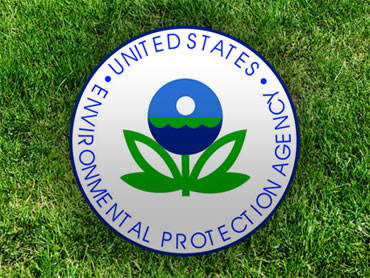The Environmental Protection Agency is rethinking its regulatory position on atrazine, one of the most commonly-used weed killers in America, as new scientific studies find the pesticide more hazardous than previously believed.
The EPA's independent scientific advisory panel is set to review the EPA's most recent evaluation of the popular pesticide atrazine and its non-cancer effects in a four-day public meeting starting next Monday, April 26.
Atrazine has been on the market and deemed safe by the U.S. government since 1958. The EPA estimates 76.5 million pounds of active ingredient are applied across the country every year, primarily on corn crops in the Midwest.
Even though the EPA concluded in 2003 that atrazine was "not likely to be carcinogenic to humans" and was safe for the environment, the EPA under Administrator Lisa P. Jackson announced plans last October for a comprehensive new evaluation of the pesticide to better determine its effects.
Steve Owens, the assistant administrator for the Office of Prevention, Pesticides, and Toxic Substances at the EPA, told CBS News that a slew of new scientific studies have prompted the agency to take another look at the pesticide.
"When we came in office last year, we at the EPA wanted to make sure that the oversight of atrazine was based on the most recent and best available science," said Owens.
While the EPA is legally obliged to review the safety regulations of pesticides every 15 years, Owens told CBS News it is not uncommon for the agency to reevaluate pesticides more frequently.
"Atrazine is constantly undergoing review because of the extent to which it is used, the studies that are being produced and the questions that are being raised by those studies," Owens said.
It will be left up to the scientific advisory panel to sift through the studies and advise the EPA on whether a change in EPA's regulatory position on atrazine is necessary. The panel is composed of biologists, statisticians, toxicologists and other experts who provide independent scientific advice to the EPA on a wide-range of health and safety issues related to pesticides.
The New York Times reported last August that atrazine was "among the most common contaminants in American reservoirs and other sources of drinking water." According to the Times, new scientific research suggested that atrazine was potentially more dangerous than previously believed at concentration levels that met federal guidelines. Currently, the EPA says that atrazine is safe in drinking water up to three parts per billion. The studies referenced by the Times suggest atrazine may still be associated with birth defects, low birth weights and menstrual problems at this level.
In honor of Earth Day yesterday, Rep. Keith Ellison of Minnesota introduced a House bill that would ban the use of the pesticide. In a statement to the press, Ellison cited a 2009 report from the Natural Resources Defense Council, which also linked low exposure levels of atrazine to adverse health effects in humans.
"On this 40th Anniversary of Earth Day, I can think of no better tribute to our planet and our people than protecting it from known harmful chemicals," Ellison said. "No one should ever have to worry if the water they drink is making them sick or preventing fertility."
Atrazine is no stranger to regulatory scrutiny. The pesticide is currently banned in the European Union due to its persistent contamination of groundwater.
Syngenta, the leading manufacturer of atrazine, says that years of research have proven that the pesticide is safe. The Swiss-based company has stood by the safety of its product ever since the EPA announced its plans to reevaluate the pesticide.
Comment: 'The Pesticide is safe'? Syngenta - a Swiss based company - failed to notice that their safe product was banned in the European Union because of persistent groundwater contamination?
Tim Pastoor, a principal scientist for Syngenta, called the agency's decision to reexamine atrazine "unnecessarily burdening EPA, a waste of tax payers' money, and a tremendous amount of work." He expects no new regulations or any surprises when the EPA concludes its reevaluation.
"It would be mind boggling if any decision other than re-registration was made," Pastoor said. "If you can't register atrazine, you can't register anything."
Pastoor suggested that pending litigation against Syngenta may have been a factor in the EPA's decision to reexamine the chemical.
Last month, five American Water state subsidiaries in Missouri, Illinois, Indiana, Ohio and Iowa joined 19 other Midwest drinking water suppliers in a federal lawsuit against Syngenta and its Delaware counterpart Syngenta Crop Protection, Inc. The plaintiffs' allege that Syngenta has made billions of dollars selling atrazine while local taxpayers were left "the ever-growing bill for filtering the toxic product from the public's drinking water."
The plaintiff's attorney Stephen Tillery called the EPA's decision to reevaluate atrazine "long overdue."
"This product was sold with the knowledge that no matter how it was applied by the farmers, it would invariably make its way off of the farmers' fields and into streams, rivers and lakes, and contaminate water supplies," Tillery said.
The EPA says there is no relation between the lawsuits against Syngenta and their reevaluation of atrazine. "The lawsuits have played no role in our decision or our evaluation," Owens said. "They are completely unrelated."
The first of next week's scientific advisory panel meetings will be on Monday, April 26, in Washington, DC. It is open to the public.
For more information about atrazine, refer to the EPA's website.




Comment: According to the EPA website: About time the EPA decides to reexamine the chemical. There is significant evidence that Atrazine posses a serious threat to human and environmental health:
More Stark Evidence of the Hazards of Atrazine
EPA Fails To Inform Public About Weed-Killer In Drinking Water
Serious Birth Defects Linked to the Agricultural Chemical Atrazine
An End to Atrazine